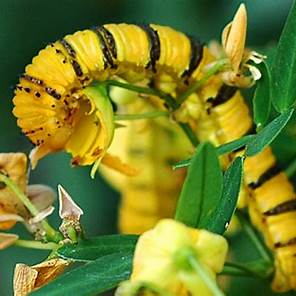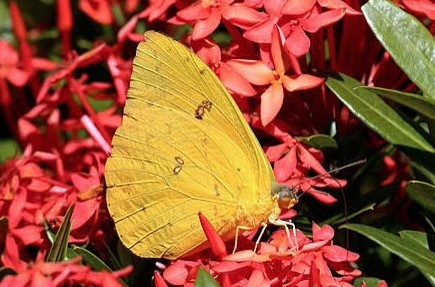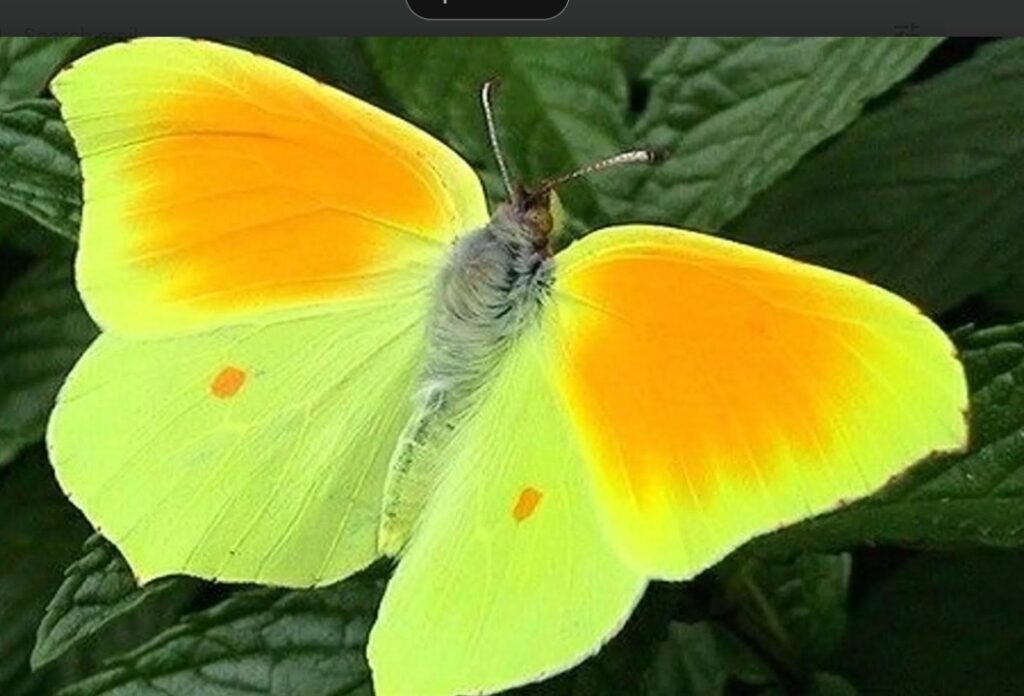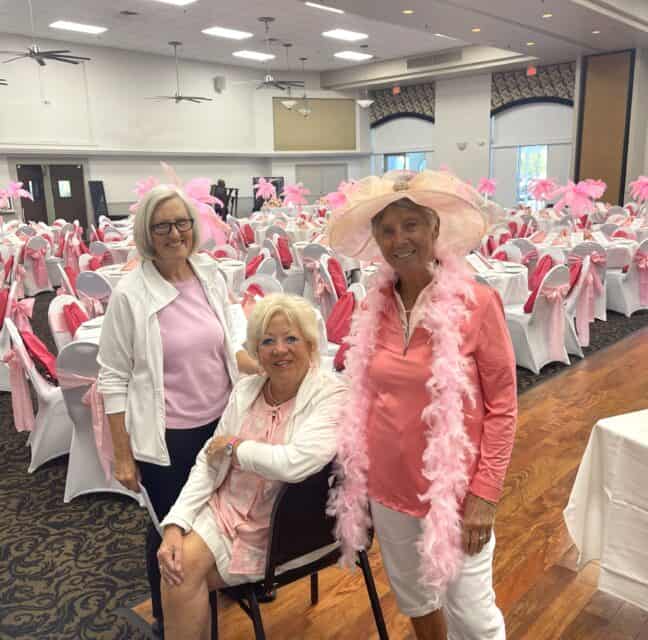
SULFUR BUTTERFLY CATERPILLAR
Spring is here, and I’m sure that you’ve noticed many more butterflies flitting around the beautiful flowers in your yards! Warmer temperatures mean many more butterflies are going through their metamorphosis stages, ultimately hatching out into adult butterflies. Then, of course, they flit off in search of nectar for food. Mama adult butterflies only live for about two to three weeks. In this time, the hundreds of eggs she lays on the host plant turn into a caterpillar larva stage, followed by the chrysalis pupa stage. Then the chrysalis changes into a beautiful adult butterfly. The male and female adult butterflies mate, mama lays the eggs, and then she dies. It’s the butterfly circle of life.
And the Glen’s wonderful Butterfly Garden is seeing its share of the winged wonders also! Our Herons Glen residents are using the Butterfly Garden for many different purposes other than just watching butterflies and other insects. Many people come to the garden just to take a few minutes and to meditate, pray, or just to relax on the benches provided in the shady, cool areas. Others come to watch the golfers on hole No. 18, across the narrow lake; watch our resident alligators; or watch the female tilapia fish compose their circular nests in the shallow edges of the lake.
Summer also marks our own resident snowbirds return north while some of us remain here but take summer vacations. Consequently, our Butterfly Society meetings will resume on Thursday, October 9 when we have more members present. Watch for future notices for the time and meeting location. The annual dues are $25 per person and are due at the October meeting. These dues cover some continuing garden maintenance costs but certainly not all the costs.
One of the common and beautiful butterflies in our garden is called the Sulfur. You can tell by its name the probable dominant color of this butterfly – vibrant yellow, since the chemical element sulfur is yellow in color. But Sulfur butterflies can have green hues also. There are, however, many different species of Sulfur butterflies, as you can tell from the photos. The Sulfurs are a subfamily type of butterfly, with about 300 different species, of which 36 species reside in North America. They range from Mexico to northern Canada. Sulfurs are very particular about where they lay their numerous eggs – primarily on one host plant – the Cassia.

Their primary source of food is nectar from red, tubular flowers. Sulfurs prefer the tubular flowers because they have a long straw-like proboscis to suck up the flower nectar. When Sulfurs reach down in the flower to feed, they can spread the pollen on the male stamen part of the flower onto the female pistil part to pollinate the plant. Many, many plant species reproduce in this way, aided by insects.
So, what then eats Sulfur butterflies? Birds and other insects. Sulfurs do have a camouflage type of coloration, however, to aid them in their success to their short-lived adulthood, mating and reproduction cycle. Female Sulfurs lay their eggs normally on Cassia plants so the young caterpillars have leaves to eat that they can digest.
Come and spend some relaxing time in the Glen’s Butterfly Garden! If you haven’t been in the garden yet, then come and relax. It is really very peaceful.







